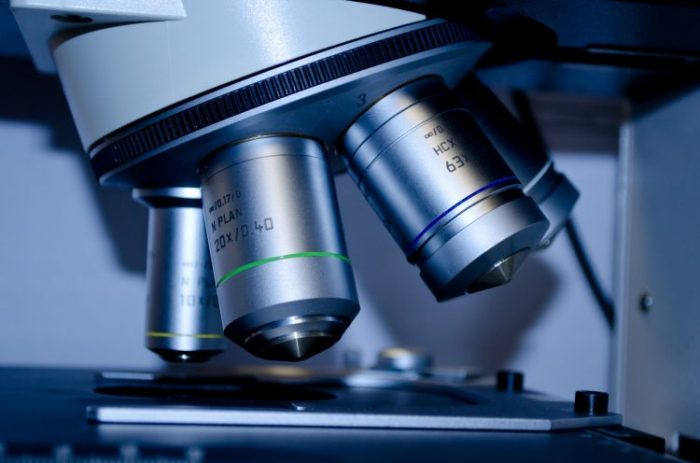The microscope is the salient instrument of the science laboratory. We use the microscope for seeing the microorganisms that we cannot see with the naked eye. The microscope is found in different types. Some use electron beam and some use light beam for the magnification of the objects.
- A microscope that uses visible light for its radiation is called the compound microscope.
- A microscope that uses electron beam wavelength for the radiation is called the electron microscope.
Here is the table of the main differences between the light microscope (compound microscope) and electron microscope. Both of these microscopes are used in different fields of life. You can read more about their types and uses on this article on TBN.
| Compound Microscope | Electron Microscope |
| Use visible light | Use electron beam |
| Can use easily | User must be experienced |
| View the only surface of objects | View surface and internal structure of the object |
| Image not clear | Make clear image |
| Use to see dead and live specimens | Use to see only dead specimens |
| Low magnification | High magnification |
| Magnify objects up to 1500x | Magnify objects up to 1,000,000 |
| Having low resolution | Having high resolution |
| Resolving power is >0.30µm | Resolving power is up to 0.0001µm |
| Lenses are made of glass | Lenses are made of electromagnets |
| View the images through the eye via the eyepiece | View the images on zinc sulfate or photographic plate fluorescent screen |
| Not used under high vacuum | Used under high vacuum |
| Price is low | Price is high |
| Maintenance rates are cheap | Maintenance rates are high |
Compound or Light Microscope
A compound microscope is also called a light microscope because it uses visible light to view the magnified objects on the eyepiece of the microscope. Its magnification power is high than the stereo or less magnified objects.
Characteristics
- It uses two or more glass lenses (convex lenses).
- One lens (objective lens) is located at the nosepiece and the second is located at the eyepiece.
- Magnification ranges between 40x-100-x
- You can use only one object at one time
- It makes two- dimensional image
- It has monocular, binocular, and trinocular head configuration
The objective lens that is found on the nosepiece has a short wavelength. It makes the image of the object because it is near the object. It receives the light from the object and makes its image in the microscope. The second lens is located at the eyepiece to magnify the image of the object to see it clearly. These compound microscopes are widely used in health and medicine industry.
Electron Microscope
The electron microscope uses a beam of electrons to view the internal structure of minute objects as well as magnifies the objects at maximum level.
The electron microscope has two types
- Transmission electron microscope (TEM)
- Scanning electron microscope (SEM)
TEM or transmission electron Microscope
- Use to check the clear structure of cells.
- Prepare ultra-thin parts of the article and in order to thicken some parts, they are stained with heavy metals like gold and palladium. This prepared material is kept in the vacuum chamber of the microscope
- An electron beam of 100, 00 volts is centered on this section, and manipulation produced by the image can be amplified with sufficient resolution to increase the total magnification by more than 10 million times.
SEM or Scanning electron Microscope
- Used to study the superficial parts of the cell and organism
- Image forms by the electrons. Electrons bump with the object and reflect back towards the source
- The resulting image has a very fine three-dimensional look.
- SEM’s magnification power is up to 10x to 500,000x
